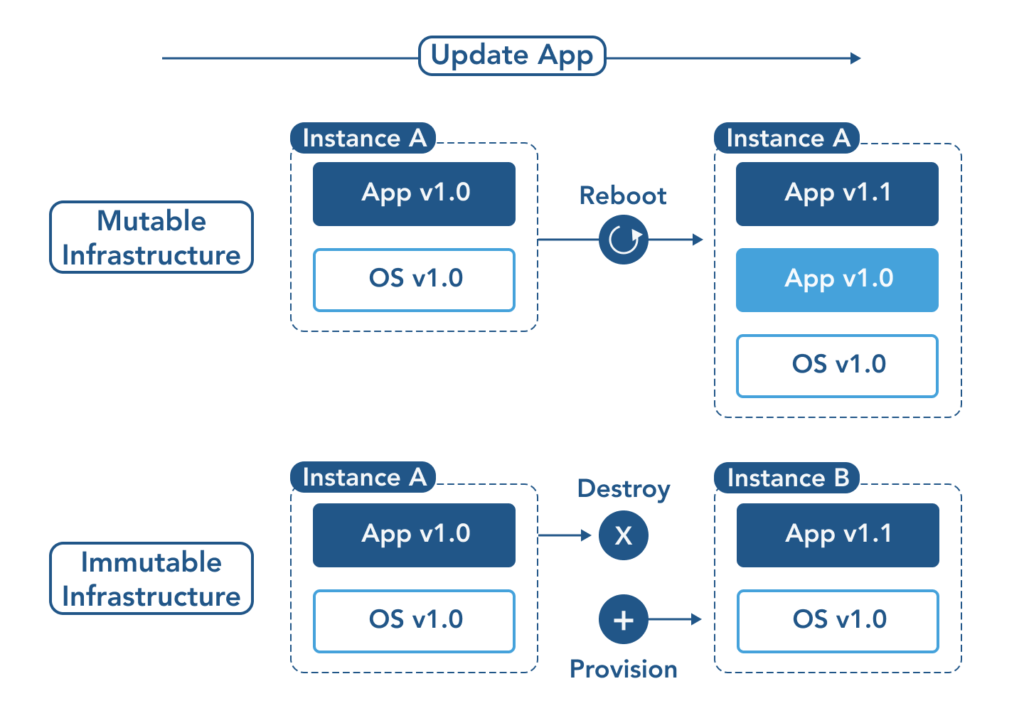Mutable and Immutable Infrastructure are two different approaches to managing infrastructure in the context of DevOps and cloud computing.

Mutable Infrastructure
- Definition: Mutable infrastructure is an approach where servers and other components are modified or updated in place. Changes can be made directly to the existing infrastructure, such as applying patches, updating software, or changing configurations.
- Characteristics:
- Configuration Drift: Over time, small changes can accumulate, leading to inconsistencies across environments (e.g., development, staging, production).
- State Management: Managing state becomes more complex as updates may affect the current state of the system.
- Flexibility: Allows for quick fixes and updates without needing to redeploy the entire system.
- Tools: Traditional configuration management tools like Ansible, Chef, and Puppet often work with mutable infrastructure.
Immutable Infrastructure
- Definition: Immutable infrastructure is an approach where components are never modified after they are deployed. Instead, if a change is needed, a new version of the component is created and deployed, and the old version is decommissioned.
- Characteristics:
- Consistency: Since components are never modified after deployment, environments are more consistent and less prone to configuration drift.
- Simplified Rollbacks: Rollbacks are simpler because you can switch back to a previous version without worrying about intermediate changes.
- Ephemeral Nature: Servers and components are often short-lived and can be replaced with new instances, which aligns well with cloud-native practices.
- Tools: Tools like Docker, Kubernetes, and Terraform are commonly used in immutable infrastructure setups.
Choosing Between Mutable and Immutable Infrastructure
-
Use Cases for Mutable Infrastructure:
- When quick, minor updates are needed without redeployment.
- In legacy systems where it’s challenging to move to an immutable model.
- When high flexibility is needed for making frequent in-place changes.
-
Use Cases for Immutable Infrastructure:
- When consistency and reliability are critical.
- In microservices or cloud-native environments where components are frequently redeployed.
- When automation and orchestration are heavily used, allowing for the seamless replacement of components.